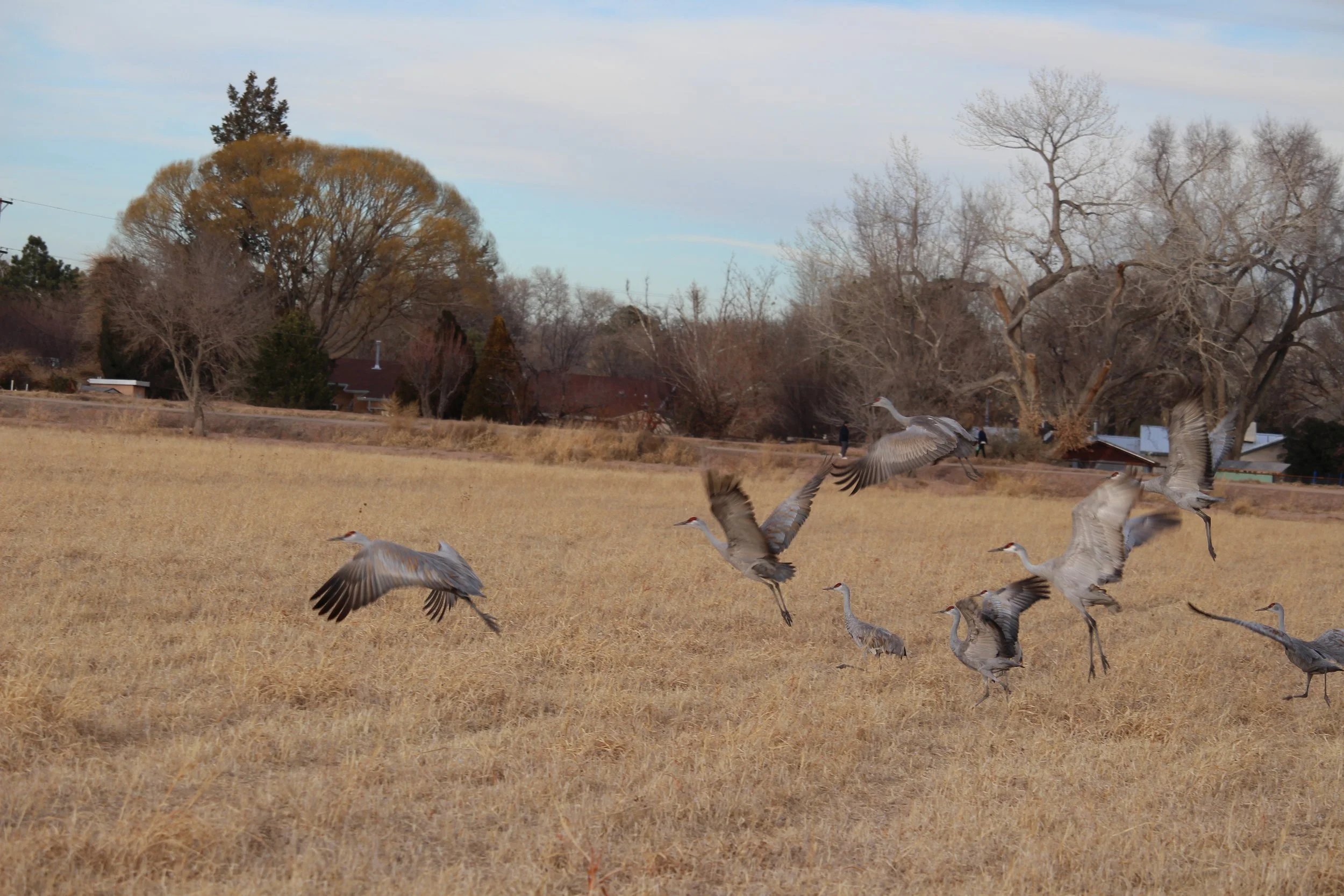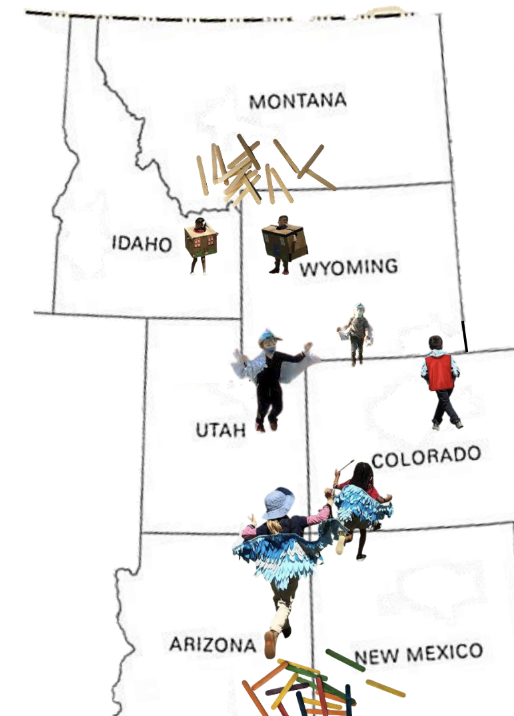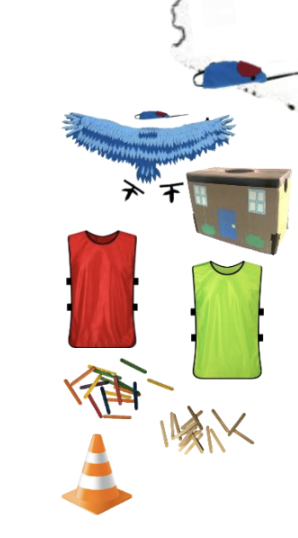Sandhill Crane Migration Activity
KEY CONCEPT TO CONVEY: Wild animals come and go. Habitat not so much. To protect wildlife, we have to protect habitat, even if we don’t always see the animals there.
KEY WORDS/PHRASES: Bosque, Vertebrate Species, Habitat, Migration
ACTIVITY SUMMARY: Through an active game where participants become cranes and migration-hazards, students learn about migration and the importance of protecting habitat even when animals are not seen.
BACKGROUND: Animals come and go. They do that all the time. They might be gone for just a few hours or several months. Some travel great distances. Others, spend all their lives in areas smaller than soccer fields. Within the Rio Grande and alongside it in its bosque (forest) there are 413 native vertebrate species of fish, birds, reptiles, amphibians, and mammals that live there at least part of every year.
The Rio Grande Silvery Minnow, a fish so small it could hide behind two or three of your fingers, can travel several miles in just a few days. Every year hummingbirds fly thousands of miles going between the Rio Grande’s riverside forest, the Bosque, and other countries like Mexico and Peru. Every now and then, you can spot a Botta’s Pocket Gopher, a type of small mammal that could sit comfortably on your hand, sticking its head out from one of its underground tunnels. The New Mexico Spadefoot toad, spends most of the year buried underground until spring and summer rains cause it to join hundreds of other toads for a mating frenzy in short-lived ponds.
We can look at a place for months on end and never see a particular type of animal there. But if you look at that same spot at just the right time, you can see that place is critical habitat for an animal that is only there part-time. That is why,it is important to take care of habitat all the time, and have it ready to be a home for wildlife when they are ready to go there for food, water, shelter, and space.
When animals travel great distances between two or more different places every year, that is known as migration. One of New Mexico’s most famous migrating animals, the Sandhill Crane, spends winters in the state. Then it flies north for the summer, to places like Yellowstone National Park in the states of Wyoming and Montana.
Each crane stands about as tall as kindergarten or first grade student. Its wings about equal to the distance between those students’ fingertips when they stretch out their arms. They can fly 45 miles per hour (~ 70 KPH) making the trip between New Mexico and Yellowstone National Park well under 24 hours of flying time. And speaking of time, cranes have been on the earth for at least 2.5 million years.
Directions
Most of the students become “Sandhill Cranes” and migrate back and forth between New Mexico and Yellowstone National Park. At each location, they feed (pick up one popsicle stick food token) and then migrate to the other location to feed there.
Student Sandhill Cranes make that annual migration several times. Eat, fly, eat, fly, and do it again.
Then, there is a loss of habitat. Two students, dressed as buildings, put themselves right on top of a crane feeding ground and reduce food access.
To make matters worse, there are students dressed as poisonous substances and fire (wearing red gym vests), and when they tag the cranes, the cranes are “harmed” and have to sit down and count to five.
Just when things seem really bad for the Sandhill cranes a couple of Eco Superhero kids come to the rescue (wearing green gym vests). They plant new fields of food (dropping popsicle sticks) to the side of the buildings. They can put out fire and remove pollution, by tagging pollution and fire so they have to sit down and count to five.
Sandhill cranes complete another cycle or two of migrations.
Supplies
Crane costumes
Crane hats (if not enough crane costumes for all who
are playing as cranes)
House/Building costumes
Gym Vest Red (fire/pollution)
Gym Vest Green (eco-hero)
Popsicle sticks (8ish per crane)
4 to 8 cones to mark
boundaries for game.
Discussion/Wrap Up:
Do all animals move around?
Do all animals migrate?
How was this like real life?
How is this different than real life?
Were there times when cranes could not find food? Did that happen in this game?
Why does taking care of wildlife mean taking care of habitat, even when the wildlife is not around?
How can you be an “Eco-Superhero”?



